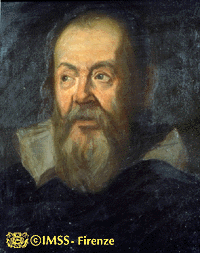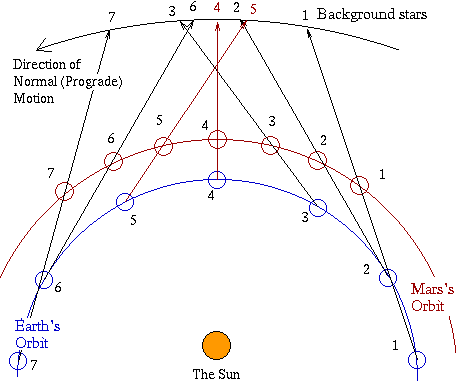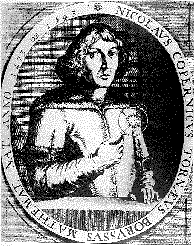(9) Discovery of the Solar SystemEarly History, False LeadsAristarchus of Samos, around 200 BC, proposed that the Earth revolved around the Sun, but found few supporters. Ptolemy, a Greek astronomer living in Egypt in the 2nd century AD, spoke for the great majority when he argued that the fixed stars were all on some distant sphere, which rotated around the Earth. Ptolemy tried to assemble and write down all that was known in his day about the heavens, and his influence was great, extending (as noted below) even to the 1600s. Yet anything that moved across the celestial sphere--Sun, Moon and planets--had to be able somehow to slip around it. The planets, in particular, were hard to understand, because their motion was not simple.
Venus and Mercury moved back and forth across the position of the Sun, sometimes rising before the Sun as morning stars, sometimes setting after it as evening stars, but never appearing in the midnight sky. Mars, Jupiter and Saturn, on the other hand, did not follow the Sun in the sky. They all tended to move in the same direction around the ecliptic, but now and then they would stop, move backwards for a while ("retrograde motion"), and then resume their usual motion.
Ptolemy tried to explain all that. The Sun and Moon, he claimed, obviously moved around Earth. To the Greek, the circle represented perfection, so Ptolemy assumed these bodies moved in circles too, and since the motion was not exactly uniform, he assumed that the center of these circles was some distance away from the Earth. While the Sun moved around Earth, Venus and Mercury obviously moved around it, on circles of their own. But what about Mars, Jupiter and Saturn? Cleverly, Ptolemy proposed that like Venus and Mercury, each of them also rotated around a point in the sky that orbited around Earth like the Sun, except that those points were empty. The backtracking of the planets now looked similar to the backtracking of Venus and Mercury. The center carrying each of those planets accounted for the planet's regular motion, but to this the planet's own motion around that center had to be added, and sometimes the sum of the two made the planet appear (for a while) to advance backwards. This "explanation" left open the question what the planets, Sun and Moon were, but worse, it was also inaccurate. As the positions of the planets were measured more and more accurately, additional corrections had to be introduced. Yet Ptolemy's view of the solar system dominated European astronomy for over 1000 years. One reason was that astronomy almost stopped in its tracks during the decline and fall of the Roman Empire and during the "dark ages" that followed. The study of the heavens continued in the Arab world, under Arab rulers, but of all the achievements of Arab astronomers, the one which exerted the greatest influence was the preservation and translation of Ptolemy's books.
Nicholaus Copernicus (the Latin version of Koppernigk) was a Polish church official whose passion was astronomy, and who actually performed some observations. By that time, all sorts of corrections had to be made to fit the motion of the planets to Ptolemy's ideas. Copernicus proposed an alternative theory--that the Earth was a planet orbiting the Sun, and that all planets moved in circles, one inside the other. Mercury and Venus had the smallest circles, smaller than that of the Earth, and therefore their position in the sky was always near the Sun's. Mars, Jupiter and Saturn moved in bigger circles, and they moved more slowly, so that whenever the Earth overtook them, they seemed to move backwards. Copernicus was quite cautious in voicing his theory: not only did it deny that the Earth was the center of the universe, but it, too, did not fully describe the motion of the planets. Some corrections were still needed. Being associated with the church (as practically all European scholars were in those days), Copernicus had to abide by a rigid discipline, and he therefore hedged his ideas and only published them at the end of his life. Because of his caution, many church scholars indeed viewed his theory as a possible alternative to Ptolemy's. Galileo Galilei (1546-1642)
Many books and plays exist on the life of Galilei, the Italian scholar who laid the foundation to the discipline known for many years as "natural philosophy," now called physics. He was the first to observe the planets through a telescope, and what he saw convinced him that Copernicus was right. How his agressive defense of the Copernican theory turned the Catholic church against him and cost him his freedom is a fascinating story, but it goes beyond our scope here. Galileo did not invent the telescope; that was done by lensmakers in Holland and elsewhere (eyeglasses had been in use for centuries). Unlike later astronomical telescopes, which turn the picture upside down, the first version worked the way opera glasses do, combining two lenses of different types. Opera glasses magnify about 2-3 times: Galileo pushed the technology to its limits, magnifying his view 8-fold and in a later instrument 33 times. That was the instrument with which, in 1609-10, Galileo made his revolutionary discoveries. He observed the Moon and saw a world with mountains and "seas," and risking blindness (since the Sun should never be looked at through a telescope) he also observed sunspots. When he turned his telescope to the planet Jupiter, he saw four moons orbiting around it, all practically in the same plane, close to the ecliptic (and therefore, they and the planet all seem to lie on the same straight line; you can get the same view through good binoculars or any telescope), very much like a miniature version of the kind of solar system proposed by Copernicus. And when he looked at Venus, he saw its visible shape changing like that of the moon, becoming a crescent when Venus was between us and the Sun, a time when most of its sunlit half faced away from Earth. Galileo was persecuted for advocating the world view of Copernicus, but his observations, which were soon confirmed by other astronomers, convinced all scholars that this was indeed the way the Sun, Earth, Moon and the planets were related. |




